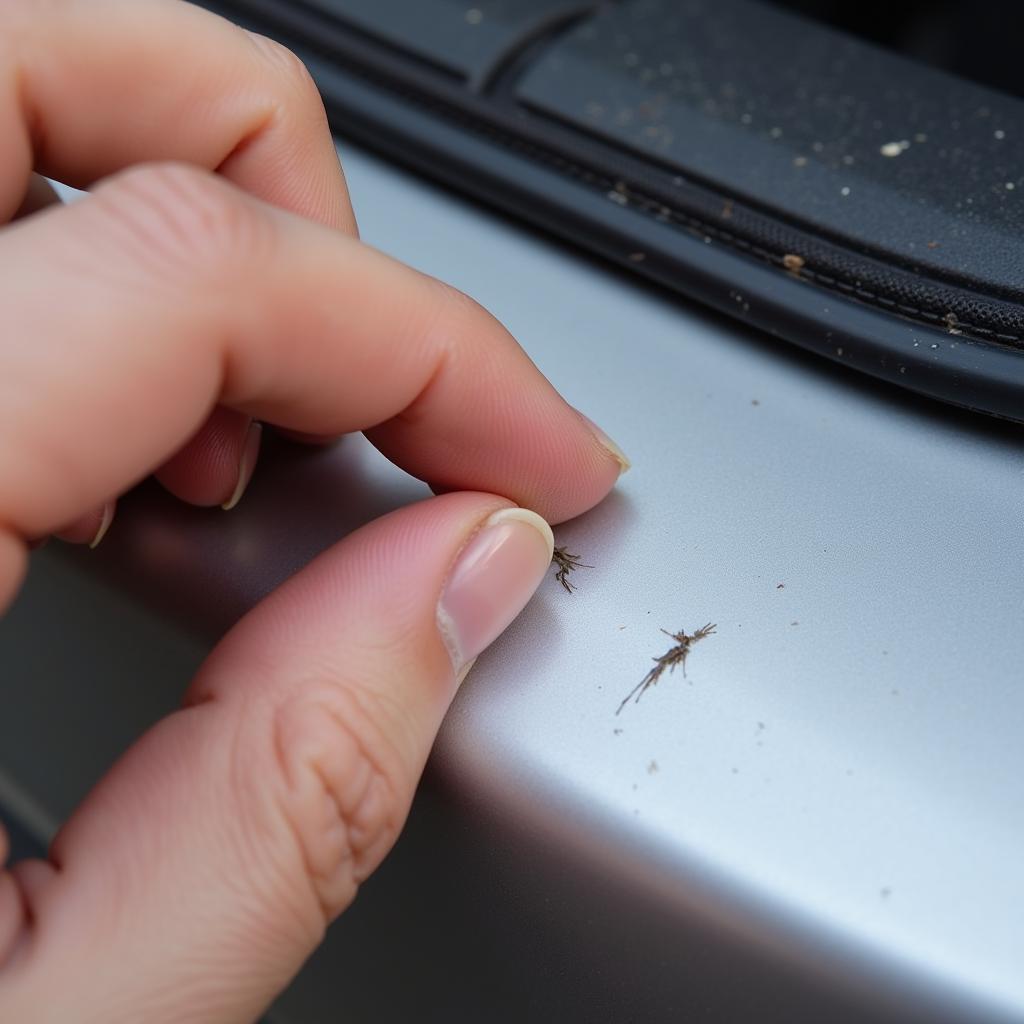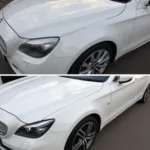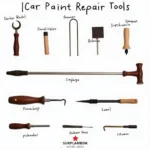A deep scratch on your car bumper can be an eyesore. Whether it’s from a parking lot mishap or a rogue shopping cart, knowing how to repair it can save you money and keep your car looking its best. This guide provides a comprehensive walkthrough on how to repair deep scratches on car bumpers, covering everything from assessing the damage to achieving a professional-looking finish. Let’s dive in.
Assessing the Damage: Knowing Your Scratch
Before you start, it’s crucial to assess the depth of the scratch. how to repair a car bumper scratch provides a good overview of basic scratch repair. A light scratch might only affect the clear coat, while a deep scratch penetrates the paint and even the primer, exposing the bare bumper material. Identifying the severity will determine the repair approach. Is the scratch through the paint to the plastic? Is it just a scuff? This initial assessment is key.
Knowing the material of your bumper is also important. Is it plastic, fiberglass, or metal? This information will influence the type of repair products you’ll need. Plastic bumpers are common and require specific fillers and paints designed for flexibility.
 Assessing a Deep Scratch on a Car Bumper
Assessing a Deep Scratch on a Car Bumper
Gathering Your Supplies: The Right Tools for the Job
Having the right tools and materials on hand is essential for a successful repair. For deep scratches, you’ll need:
- Sandpaper (various grits)
- Primer specifically designed for car bumpers
- Automotive touch-up paint (matched to your car’s color)
- Clear coat
- Masking tape and paper
- Rubbing compound
- Polishing compound
- Applicators (foam brushes, microfiber cloths)
- Wax and grease remover
- Plastic bumper filler (if applicable)
Repairing the Scratch: A Step-by-Step Guide
- Clean the area: Thoroughly clean the scratched area with soap and water, then use a wax and grease remover. This ensures proper adhesion of the repair products.
- Sand the scratch: Start with a coarser grit sandpaper (e.g., 320-grit) to smooth the edges of the scratch and remove any loose paint. Gradually move to finer grits (e.g., 1500-grit) to create a smooth surface for priming. For deeper scratches, how to repair deep scratches on car bumper door might offer additional insights, especially if the scratch extends to the door.
- Apply filler (if necessary): If the scratch is deep enough to expose the bumper material, apply plastic filler according to the manufacturer’s instructions. Allow it to dry and sand it smooth.
- Prime the area: Apply several thin coats of primer, allowing each coat to dry before applying the next. This creates a uniform base for the paint.
- Apply touch-up paint: Carefully apply thin coats of touch-up paint, ensuring a good color match. Let each coat dry completely.
- Apply clear coat: Once the paint is dry, apply a few layers of clear coat to protect the paint and give it a glossy finish.
- Sand and polish: After the clear coat has dried, use rubbing compound and polishing compound to remove any imperfections and blend the repair with the surrounding area. More information on costs associated with this type of repair can be found on how much to repair car bumper scratches.
Preventing Future Scratches: Protecting Your Bumper
Preventing scratches is always better than repairing them. Consider these tips:
- Park carefully, avoiding tight spaces and potential hazards.
- Use bumper guards or protectors.
- Be mindful of shopping carts and other objects that could scratch your bumper.
- Regularly wax your car to provide an extra layer of protection.
Conclusion
Repairing a deep scratch on your car bumper might seem daunting, but with the right approach and a little patience, you can achieve professional-looking results. Following this guide will help you restore your bumper’s appearance and save you the cost of a professional repair. Remember to always assess the damage properly and use the correct products for your bumper material. If you have a plastic bumper, be sure to check out how to repair deep scratch on plastic car bumper for specialized advice. By taking proactive steps, you can keep your car looking its best for years to come.
Expert Insight:
- Maria Sanchez, Automotive Paint Specialist: “Always use thin coats of paint and primer. Thick coats are more prone to cracking and peeling.”
- John Davis, Auto Body Repair Technician: “Proper sanding is key to a smooth and invisible repair. Don’t rush this step.”
- Lisa Rodriguez, Car Detailing Expert: “Regular waxing not only protects your car’s paint but also makes it easier to remove minor scratches and scuffs.”
Need further assistance? Contact us via WhatsApp: +1(641)206-8880, Email: [email protected]. We have a 24/7 customer support team.


